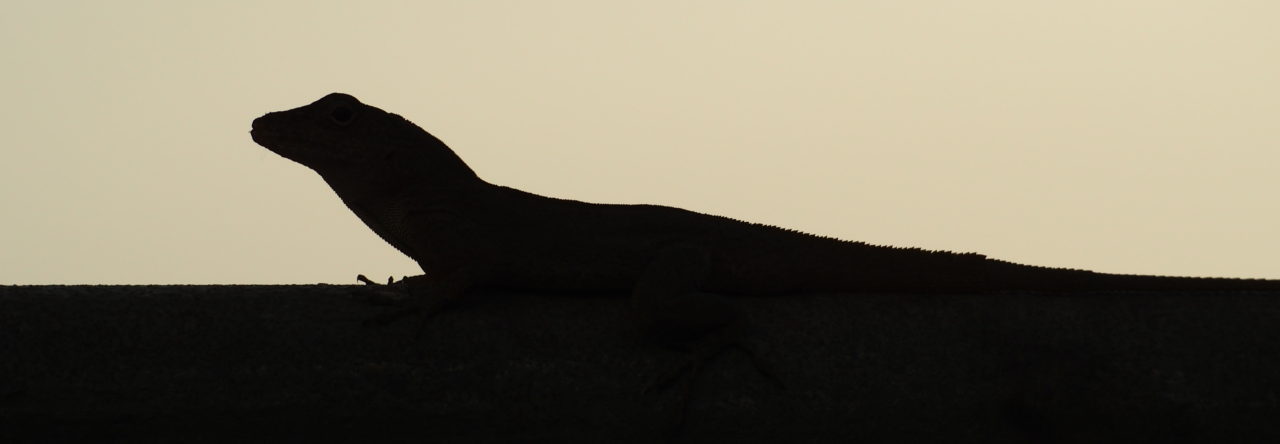
Barely even kissing cousins: A. aequatorialis on the left and A. fitchi (photo thanks to Chris Funk) on the right.
The new Castañeda and de Queiroz phylogeny of Dactyloa is an important advance in our understanding of anole phylogenetics. Prior to this paper, relationships among clades within Dactyloa had been little studied; indeed, the monophyly of Dactyloa was in question, with a viable alternative being that Dactyloa is a paraphyletic group from which the rest of Anolis sprang. Not only have Castañeda and de Queiroz convincingly laid this possibility to rest, but they have identified five strongly supported clades. As the previous AA post on this paper noted, these clades are geographically coherent, revealing five geographically distinct theaters of Dactyloa diversification.
The paper has important implications in several other respects:
1. Size evolution: Dactyloa is known for its giant anoles (officially defined by Lazell as an anole exceeding 100 mm in snout-vent length). Almost all giant Dactyloa belong to the latifrons clade, all members of which, save one, are giants.
2. Convergence: In a number of cases, species that were thought to be closely-related were found to occur in different clades. The most amazing of these are A. aequatorialis and A. fitchi (pictured above), so similar in appearance and ecology that they were thought to be sister taxa that replaced each other on opposite sides of the Andes. However, it turns out that they are not at all closely related and belong in different clades.
3. Evolutionary divergence: an underexplored aspect is the extent of evolutionary diversification within clades of Dactyloa. Though much remains to be learned, it is clear that diversification has been quite extensive, as a number of the clades contain an ecomorphological array of species. The Western clade, for example, contains species such as festae, peraccae, chloris, aequatorialis, and gemmosus, which are very distinct from each other morphologically and utilize different parts of the structural habitat. Collecting the necessary morphological, ecological and behavioral data to trace the pattern of Dactyloa radiation will be an exciting challenge in the coming years!
In sum, this paper importantly advances our understanding of anole evolution. If now we could only crack that Norops nut!
- Evolution in Real Time on Lizard Island - March 23, 2025
- Spider Snags Adult Anolis osa - March 22, 2025
- An Homage to the Green Anoles of New Orleans - March 21, 2025


1 Pingback